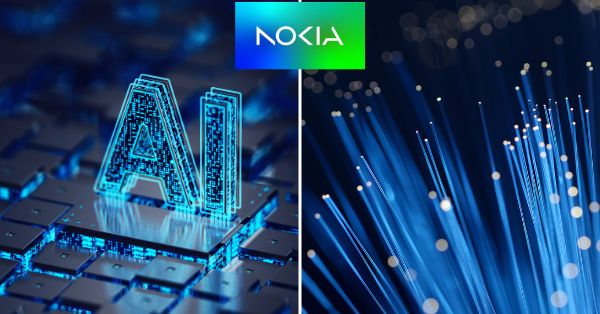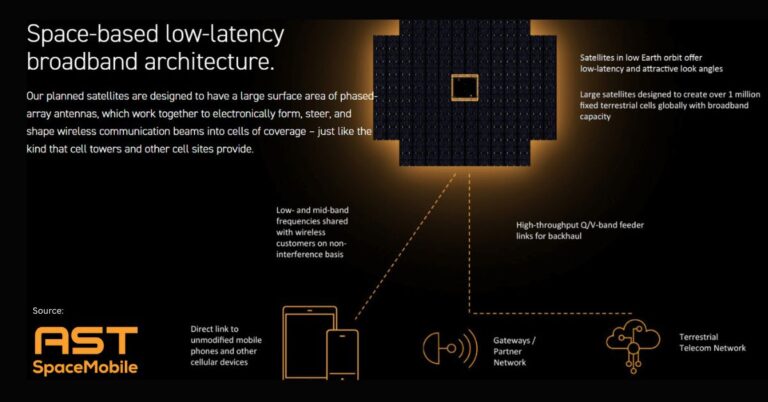Mobile Networks: Still Strategic, but No Longer Center Stage
For decades, Nokia’s Mobile Networks division stood at the heart of its telecom business, primarily through its radio access network (RAN) technologies. These solutions were central to global mobile connectivity and represented the lion’s share of Nokia’s revenue. That dynamic is now changing. With the global 5G rollout maturing—particularly in large markets like India—and the RAN sector seeing stagnant growth projections through 2029, the division is facing both internal and market-driven challenges.
Q2 2025 results show Mobile Networks contributing €1.73 billion in revenue, down 13% year over year. While Nokia attributes some of this decline to one-time revenue recognition in Q2 2024, the downward trend reflects structural industry headwinds. This includes market saturation, slowed investment cycles, and increasing competition from Samsung, Ericsson, and Huawei.
Despite this shift, CEO Justin Hotard remains firm: Mobile Networks is still essential to Nokia’s portfolio. His argument? RAN capabilities remain one of the critical pillars in the architecture of modern digital infrastructure and will evolve further in response to demands from AI, IoT, and immersive connectivity.
Network Infrastructure Surpasses Mobile Networks in Revenue and Focus
The more compelling growth story at Nokia lies in its Network Infrastructure unit. This division—encompassing optical networking, IP routing, and fixed broadband—now leads the company in revenue, generating €1.9 billion in Q2 2025. An 8% increase year over year (on a constant currency basis) underscores this growth trajectory.
This surge has been driven largely by rising demand among hyperscalers and data center operators, who are racing to expand network capacity in support of AI workloads. The integration of Infinera, a €2.3 billion acquisition finalized earlier this year, bolstered Nokia’s position in 800G optics and high-performance transport networks.
Nokia’s focus here aligns with broader market trends. According to research firm Dell’Oro, the optical transport market is expected to grow at 5% annually through 2029, significantly outpacing the RAN segment. This makes the Infrastructure division not just a growth area—but a strategic pivot point.
AI Infrastructure and Cloud Partnerships Take Center Stage
Hotard’s background as head of Intel’s Data Center and AI Group is proving pivotal. Since taking over as CEO in April 2025, he has advocated for aligning Nokia’s investments with the global AI boom. He believes that “connectivity will be a critical differentiator in the AI supercycle.”
Nokia is now positioning itself as a full-stack AI infrastructure enabler. The company’s Event-Driven Automation (EDA) platform and optical transport technologies support high-capacity, low-latency infrastructure critical for AI model training and real-time inferencing.
Moreover, partnerships with cloud players like CoreWeave and Kyndryl validate Nokia’s traction with hyperscalers. These collaborations enable seamless integration of edge computing, network slicing, and private 5G into data center and enterprise environments.
Enterprise Momentum Signals a Changing Customer Landscape
Enterprise sales have grown into a key component of Nokia’s revenue mix, reflecting the company’s ongoing diversification beyond traditional telecom operators. In Q2, enterprise customers accounted for a record 16% of total revenue, with 30 new private 5G deals signed.
These deployments are split between localized campus networks (using platforms like DAC and MXIE) and macro-scale wide-area private networks. Headline wins included Thames Freeport in the UK and Memphis Light, Gas and Water (MLGW) in the U.S. This growth speaks to broader adoption of Industry 4.0 use cases, where edge-driven automation and low-latency applications demand tailored connectivity solutions.
Financial Pressures Highlight External Risks
While Nokia is making strategic headway, its financials reflect considerable external pressure. The company reported €4.55 billion in net sales for Q2, a 1% decline on a constant currency basis. More concerning is the drop in operating margin—from 9.7% in Q2 2024 to 6.6% in the latest quarter.
The biggest culprits? Currency volatility and tariffs. Nokia estimates a €230 million impact from a weaker U.S. dollar and an additional €50–€80 million from tariff-related costs. These factors led the company to revise its full-year operating profit guidance down to €1.6 billion–€2.1 billion, from a prior estimate of €1.9 billion–€2.4 billion.
Despite these headwinds, the company maintains €2.9 billion in net cash and has committed to a disciplined capital allocation strategy. A 50% to 80% free cash flow conversion target reinforces management’s confidence in Nokia’s operating fundamentals.
Strategic Reorganization: A Unified Approach for the AI Era
Hotard is also steering Nokia through a corporate restructuring to better align with its AI-driven future. This includes unifying internal functions, streamlining operations, and optimizing R&D spending to focus on scalable platforms and high-growth segments.
The restructuring aims to eliminate silos between product groups and align the company under a single, integrated go-to-market approach. The changes are expected to be detailed further during Nokia’s Capital Markets Day on November 19, 2025, in New York.
Hotard’s vision is clear: engage customers not as a portfolio of separate units, but as one unified partner offering end-to-end solutions, from 5G and FWA to AI-powered automation and fiber access.
The Future of Mobile Networks: Rationalized, but Not Abandoned
Some analysts speculated that Nokia might divest the Mobile Networks division—especially given earlier rumors about a potential sale to Samsung Networks. However, Hotard’s public comments suggest otherwise. He continues to view the unit as a long-term play that must adapt to new technology cycles.
Hotard emphasized preserving market share in a flat environment while identifying regional and technological niches where Nokia can regain lost ground. In fact, Nokia claims it is already beginning to recapture site-level share in some geographies.
Even as AI, optical networking, and enterprise solutions take precedence, the Mobile Networks business remains an important pillar—especially for maintaining customer relationships in integrated core and RAN deployments.
Conclusion: Betting on AI Without Losing Mobile Ground
Nokia is executing a strategic realignment that reflects fundamental changes in the telecom and technology ecosystem. The message from Q2 is nuanced: while Mobile Networks is no longer the primary engine, it remains central to Nokia’s long-term platform strategy.
By prioritizing optical transport, cloud-native software, and AI-enabled infrastructure, Nokia is positioning itself to capture emerging revenue streams in data centers, smart manufacturing, and enterprise networking.
That said, the company’s ability to balance this transformation while stabilizing its mobile legacy business will be a key test in the months ahead. Currency and tariff challenges remain, but with financial resilience, a diversified portfolio, and a growing enterprise presence, Nokia is navigating the transition with cautious optimism.
For stakeholders watching Nokia’s evolution, the takeaway is clear: Mobile may no longer lead, but it still matters—and the AI-driven infrastructure opportunity is only just beginning.








































